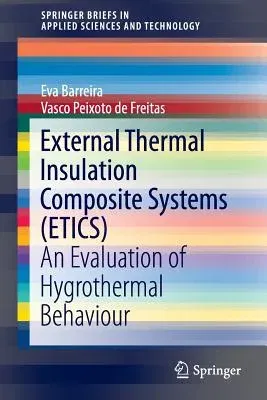This book analyzes the hygrothermal behaviour of external thermal
insulation composite systems (ETICS), components that increase the
thermal efficiency of buildings. Treating a topic that has largely been
neglected, it explores the main cause of biological growth within ETICS.
The results of two experimental test series are presented: (i) a
long-term assessment of four façades covered with ETICS and (ii) an
evaluation of the factors affecting the façades' hygrothermal behaviour.
Furthermore, using a previously validated numerical model, it presents a
sensitivity analysis of the hygrothermal behaviour of façades coated
with ETICS. It also provides a methodology to assess the surface
humidification of ETICS, which combines the effect of surface
condensation, wind-driven rain and the drying process (three of the most
prevalent parameters influencing the surface moisture content), which
can then be used as a decision-support tool. ETICS are now frequently
used in Europe to improve the thermal efficiency of buildings. Despite
their advantages in terms of thermal efficiency, their low cost and
their ease of application, these systems are adversely affected by
microbiological growth, which causes defacement of cladding. Although
the thermal and mechanical performance of the system is not impaired,
biological defacement has an enormous aesthetic impact, affecting the
inhabitants' living experience and restricting the full implementation
of this technology. External Thermal Insulation Composite Systems
(ETICS): An Evaluation of Hygrothermal Behaviour provides a valuable
resource to engineers and architects utilizing ETICS in their work, and
for researchers and students interested in the hygrothermal behaviour of
ETICS. It is also intended for those employed in industry and
manufacturers of ETICS.













